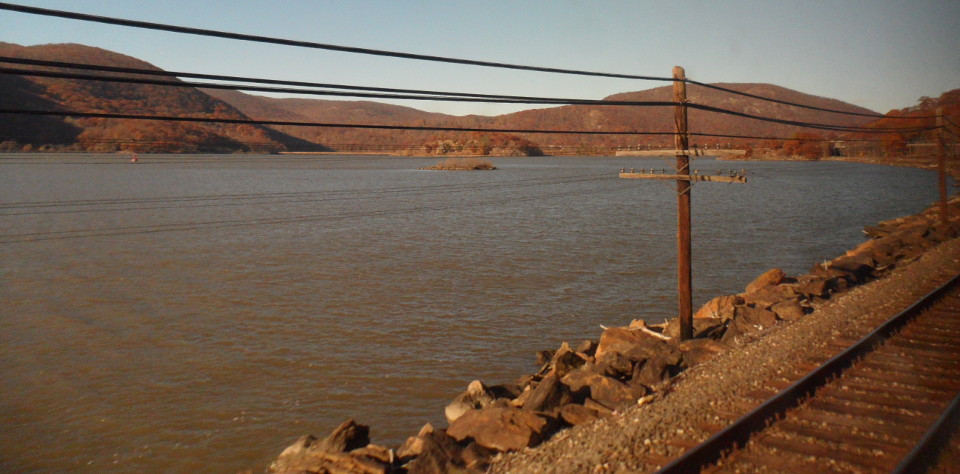
In November 2013, after an eventful business trip to San Francisco and New York City, I (Jeffrey Dungen, CEO of reelyActive) decided to take the train home to Montreal. Of course a flight or even a bus would have been faster, but I’ve always been fascinated by trains and was excited to have an excuse to take one of the few international passenger rail routes in North America. The Amtrak Adirondack follows a beautiful trace along the Hudson River and along the banks of Lake Champlain. And the 11+ hour journey gives one plenty of time for reflection while enjoying the scenery.
When you think about it, much of the track on the route dates back as far as the 1850s. And while the rails themselves have been upgraded from the originals, the standard gauge is unchanged. It is almost unfathomable, in a time where consumer electronics become obsolete in years if not months, that a technology infrastructure, such as railroads, could remain relevant for centuries!
It took true pioneers to build the first railroads. Imagine convincing someone who had never seen a train of the value of this new transportation infrastructure. “Railroads would better connect towns, cities and resources” you might say. “But those places are already connected by waterways and primitive roads” they might say. The pioneers, however, weren’t thinking about what railroads were (an accessible and modular means to move freight and passengers over land), they were thinking about what railroads enabled, for instance, the potential to colonize the United States and Canada.
The train ride brought familiarity to that scenario. At reelyActive, we’re proposing infrastructure to better connect people, places and things. “But don’t smartphones already do that?” say many critics. However, just like the railroad pioneers, we are less concerned about what that infrastructure is (an accessible and modular means to move data packets among massive numbers of devices), and rather focused on what that infrastructure enables: the Internet of Things.
And, speaking of the Internet of Things, it has indeed been a very interesting year. The tech blogs hype the concept, and there’s excitement over talk of tens of billions of devices coming online in the next few years. Surely it’s not unlike the buzz preceding the colonization of the American interior in the 19th century. But how will it all unfold in the case of the IoT? Will major players like Cisco, GE and now Bosch become the Vanderbilts, Goulds and Hills?
In keeping with the railroad analogy, if the intent is to create a pervasive Internet of Things, there will indeed need to be a standard gauge just like the one that allows the Adirondack to operate on tracks managed by 5 different owners in two countries. But that alone is insufficient. The 11 hours it takes the Adirondack to cover the 613km route is not limited by the locomotive’s speed, but rather by 5 different track owners all acting in their own interest. A similar arrangement does not bode well for a pervasive Internet of Things!
In summary, the long, slow but scenic trip on the Adirondack was an excellent reminder that infrastructure built on standards can provide continuous and extensive value, far beyond what can be imagined at conception. However, the inconveniences of the journey serve as a reminder that infrastructure must serve the interests of its users, not just its owners. History’s lessons can serve to ensure that the Things of the future enjoy a smooth ride.
Comments
One response to “Rails and Reels: History, Infrastructure and the IoT”
[…] presents the challenge of new infrastructure requirements, as we describe in our previous blog post Rails and Reels: History, Infrastructure and the IoT, however, in our opinion, it is the most effective and efficient means to usher in an age of […]
LikeLike